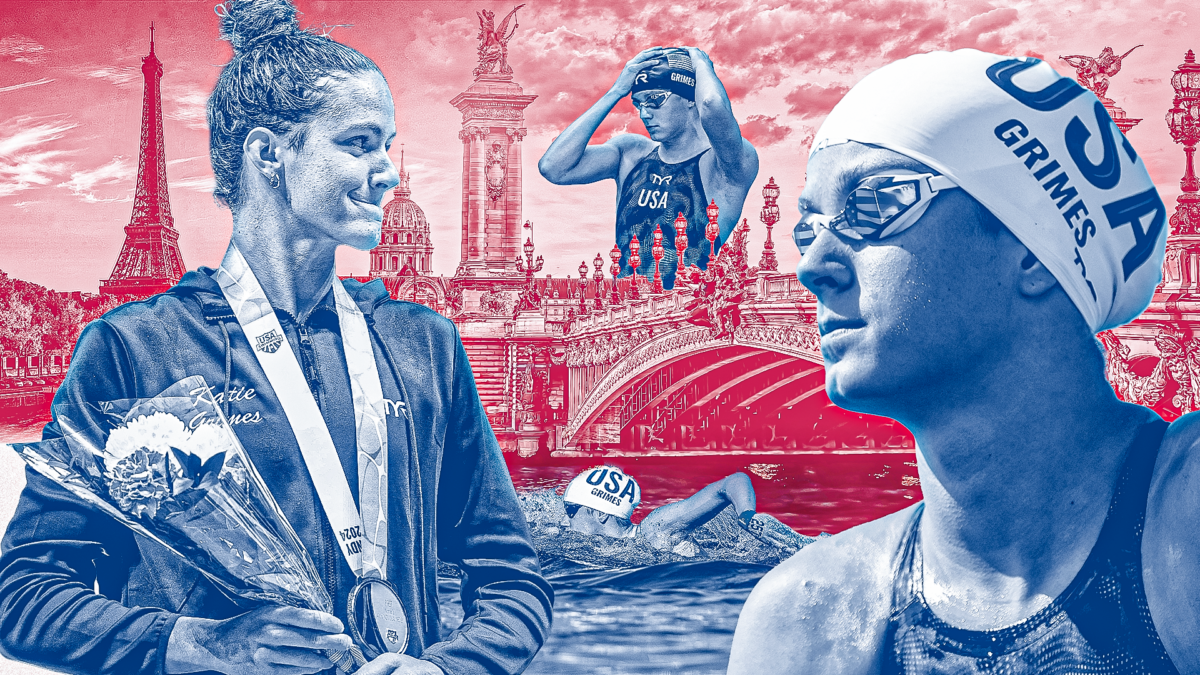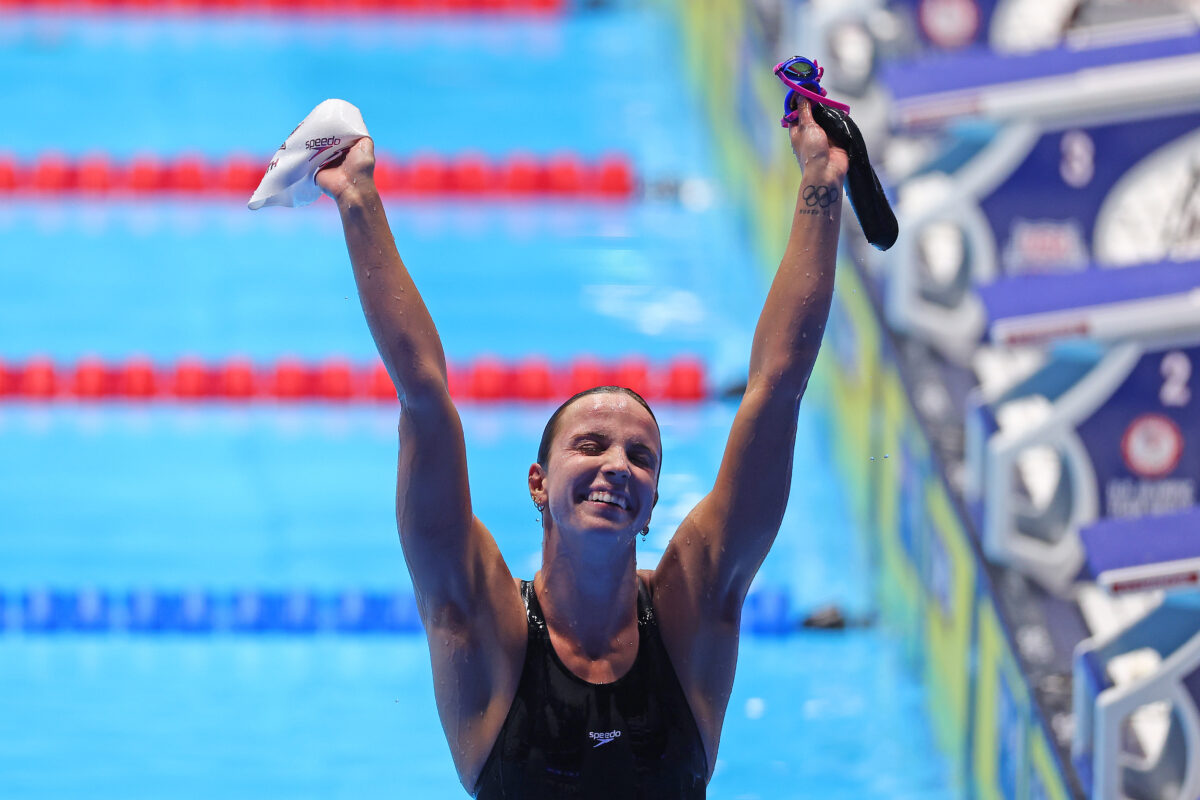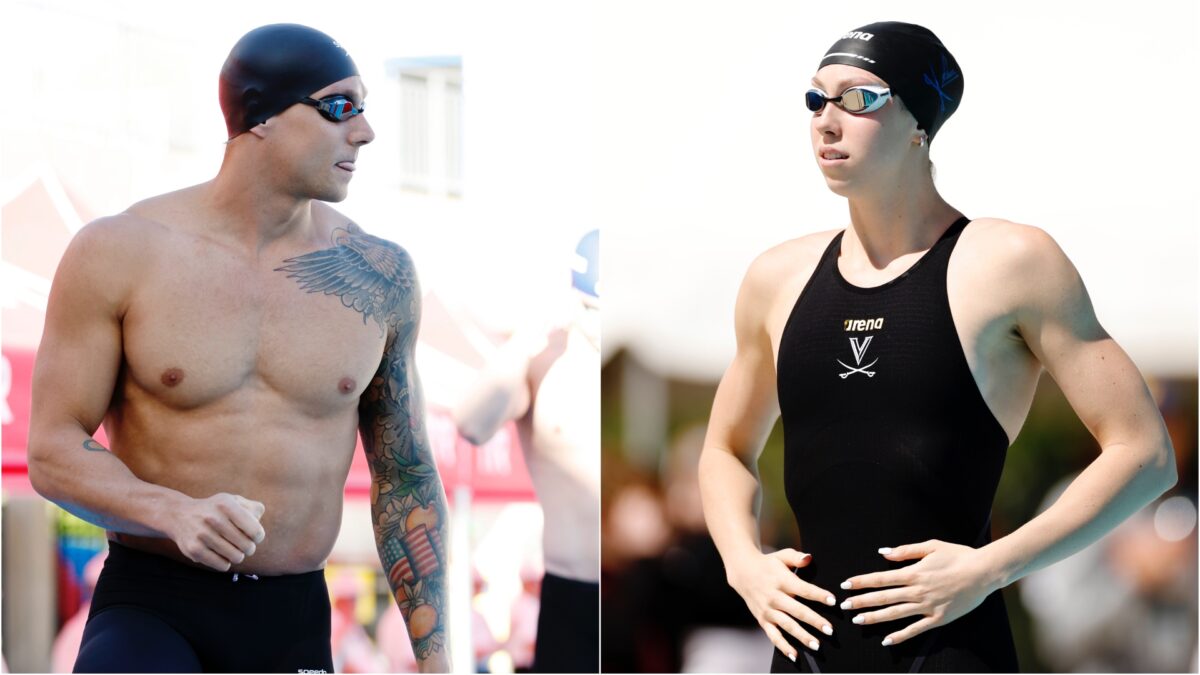Most people have no idea of the level of effort and sacrifice required to train as an elite athlete for the Olympics. It’s unquestionably a full-time job, even as many athletes have additional jobs to support themselves.
Fans don’t see are the endless hours of training and recovery preparing for a moment that happens only every four years.
Ahead of the 2024 Paris Olympics, For The Win spoke with Team USA swimmers competing at the Games to learn what a typical training day is like for them. So here’s a look at a day in the Olympic training life of Regan Smith, Ryan Murphy, Katie Grimes and Chase Kalisz — all of whom are at least two-time Olympic swimmers.
Regan Smith: 100-meter backstroke, 200-meter backstroke, 200-meter butterfly

A three-time Olympic medalist, 22-year-old Smith is racing for her first Olympic gold in Paris, and she has a shot at it in all three events.
Smith told For The Win in June that she has two typical training days: one when she swims twice and another when she swims and then weight lifts.
6:20 a.m. — Wake up, eat breakfast, go to practice
Breakfast for Smith is all about packing in as many nutrients, protein and overall calories. She usually eats oatmeal with a spoonful of peanut butter, a scoop of protein powder and a tablespoon of chia seeds, topped with honey, bananas, strawberries and chocolate chips.
“I eat that like every day,” she said. “Sometimes, I eat it twice a day because it’s so good, and I never get sick of it.”
7 a.m. – 8 a.m. — Swim practice
After her first practice, she heads home for a second breakfast and a nap. Then she has lunch, catches up on emails, watches TV or plays with her cat, Roo. At the time of the interview, she said she was binge-watching America’s Sweethearts: Dallas Cowboys Cheerleaders on Netflix.
For lunch, she sticks with typically breakfast food and will have two or three eggs with toast, orange juice and chocolate milk.
12:30 p.m. – 1:30 p.m. — Weight training when she doesn’t have a second practice
2 p.m. – 4 p.m. — Swim practice when she doesn’t have weight training
After her second practice, Smith is done for the day. So she eats dinner — often meal prep from Hello Fresh because she loves routine — and finds ways to relax and unwind.
“Yesterday [in June] after my second practice ended, I spent an hour and a half sitting outside reading my book in the shade because I love heat,” she said about living and training in Austin with Longhorn Aquatics. “I’m a great heat girl, so I just sat outside and it’s like 95 degrees and relaxed and then went to bed.”
Ryan Murphy: 100-meter backstroke, 200-meter backstroke

Back for his third Olympics, 29-year-old Murphy has been remarkably consistent over the years, and at U.S. trials, he became the first swimmer to win the men’s 100 and 200 backstroke at three straight U.S. trials. He trains at Cal Berkeley, where he competed in college, and For The Win spoke with him on campus in May.
5:15 a.m. — Wake up, drink an espresso shot, eat a banana and energy bar
6 a.m. – 8 a.m. — Swim practice
After his first practice of the day (on days when he has doubles), Murphy heads home for a second breakfast and gets some non-training work done.
“I’m building a swim school in my hometown of Jacksonville right now,” Murphy said. “So I’ll always have some calls with that. The building’s still going up, so it’s calls with contractors.
“And then I’m also an advisor to do two different investment firms out here. So I’m an advisor to a venture capital group that’s investing in companies with a Cal co-founder, and then I’m an advisor to a private equity group that’s investing in medical devices. So I try to keep myself busy in between the practices.”
12:45 p.m. – 1:45 p.m. — Weight training
2:15 p.m. – 3:45 p.m. — Swim practice
“When I go home at night, then I’m typically recovering for the next day,” Murphy said. “So I’ll turn on the sauna, get in the sauna for a little bit, have a have an ice bath, and then, typically, I’ll do some stretching to make sure I’m loose for the next day.”
The at-home sauna and cold plunge is a huge perk and probably the No. 1 tool in recovery, he said.
“I’m able to get way deeper into my muscles when I’m stretching in the sauna,” he said. “Then when I go to the cold tub, your heart rate just plummets. So I’ll go into the sauna, I’ll be at about 150 heart rate. And I’ll go into the cold tub, and a minute later, I’ll be at a 36 heart rate. So it’s really a nervous system reset when you go back and forth between the two, and so it just makes you feel really good the next day.”
Katie Grimes: 400-meter individual medley, 1,500-meter freestyle, 10k open water marathon

The most versatile swimmer on Team USA’s Olympic roster, 18-year-old Grimes has been training for very different events: a marathon swim, the longest race in the pool and the 400 IM, which is a grueling spectacle of 100 meters butterfly, 100 backstroke, 100 breaststroke and 100 freestyle. So her Las Vegas training days start early, especially as she finished high school.
3:45 a.m. — Wake up, eat breakfast, head to the pool
5 a.m. – 7 a.m. — Swim practice
7:30 a.m. — Return home, eat a second breakfast
“I always have oatmeal before morning practice because it’s light, and it doesn’t upset my stomach,” she said in June. “And then after practice, I eat breakfast again, and sometimes I’ll have waffles or pancakes or something like bacon and eggs.”
Until she recently graduated from high school, Grimes said she’d get some school work done for two or three hours. She was an online student, which helped enable her training schedule. Sometimes, she’d sneak a nap in there too.
Midday — Lunch
“I’m so basic, and I can eat the same thing every day if I have to,” Grimes said. “But usually, I’ll just have white rice and grilled chicken or steak or salmon or something like that with a vegetable. And then it’s usually the same for dinner.”
3 p.m. – 5 p.m. — Swim practice
5:15 p.m. – 6:45 p.m. — Weight training
7:15 p.m. — Get home, eat dinner, hang out with her family on the couch
9 p.m. — Bed
“And then wake up and do it again.”
Chase Kalisz: 400-meter IM

A three-time Olympian with a gold and a silver medal, 30-year-old Kalisz is aiming to make history in Paris. Although no man at least 30 years old has ever won an Olympic swimming medal in a race at least 400 meters long, as Swimming World magazine noted, Kalisz could be the first if he makes the podium.
For The Win spoke with Kalisz, who was promoting his partnership with Eli Lilly and Company, while he was training at the U.S. Olympic training center in Colorado Springs in May.
“It’s not too fun, but it’s part of the job,” he said about training at altitude.
9 a.m. – 11 a.m. — Swim practice
Midday — Weight training on Tuesdays, Thursdays and Saturdays
5 p.m. – 7 p.m. — Swim practice
Kalisz said at the training center, he was doing two swim practices a day on Mondays, Tuesdays, Thursdays and Fridays, along with Saturday mornings. Wednesdays, he would just have a morning workout and the afternoon off, and Sundays were rest days.
“It’s quite a bit hectic schedule for just going back and forth to the pool, trying to recover, trying to eat, trying to mentally prepare for the next workout,” he said.
“And then you throw in the aspect of being up at altitude where just walking down the street makes you sore. So I think it’s a very crucial part of my training, and this is my third month-long camp this year that I’ve been to. I think collectively — I’ve looked it up — I’ve done about two years of my life total up here in Colorado, and I’ve never lived here once.”
[lawrence-auto-related count=3 tag=421393228]









 WOOORRRLLLDDD RECORRRDDD
WOOORRRLLLDDD RECORRRDDD









